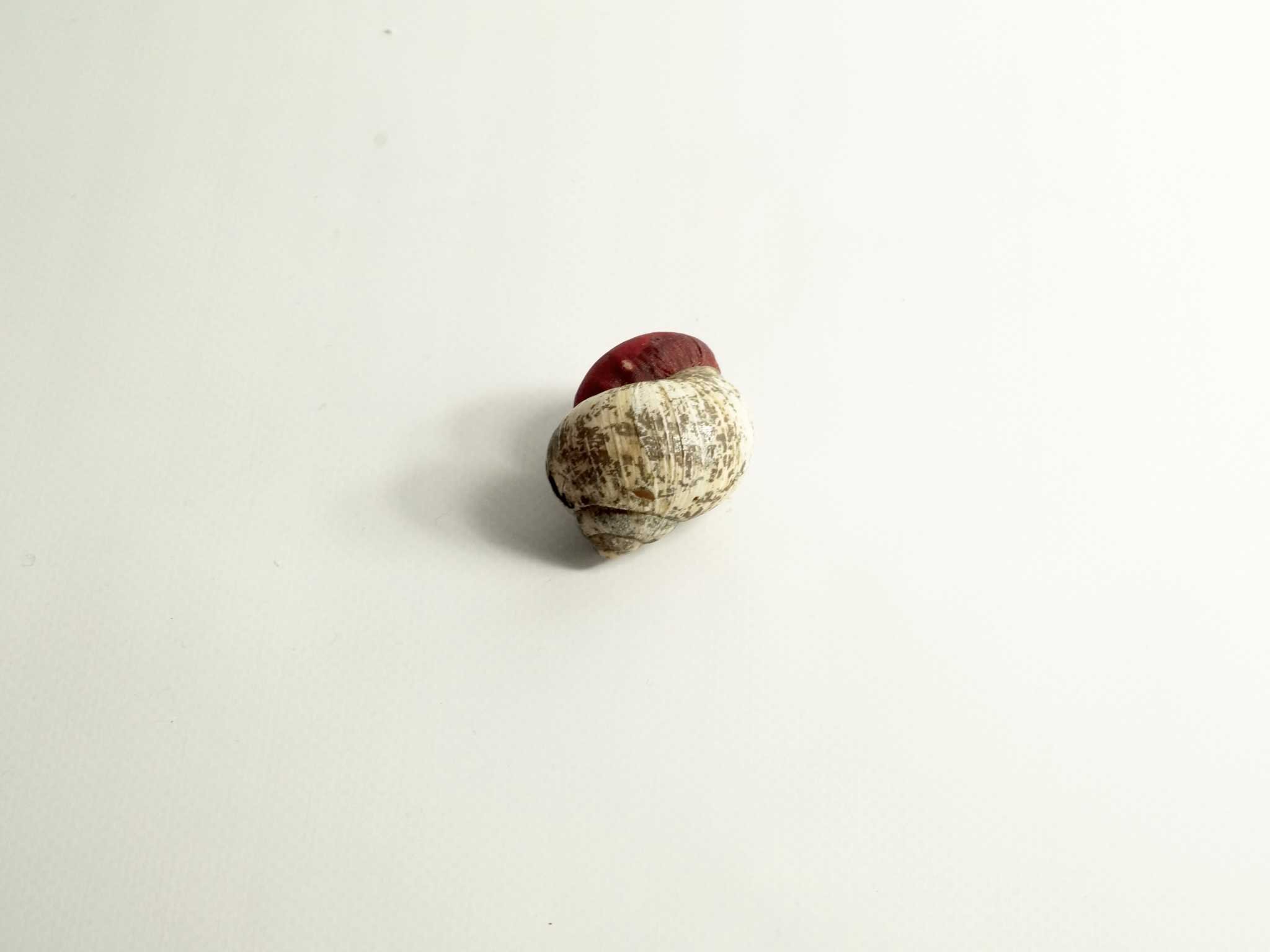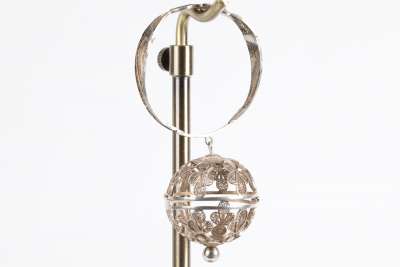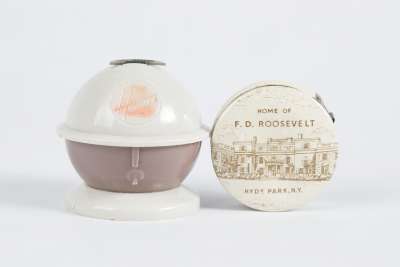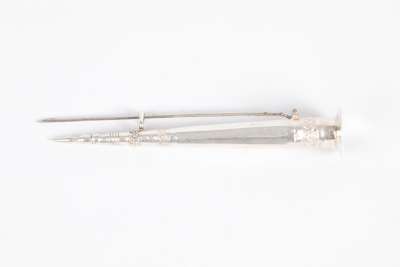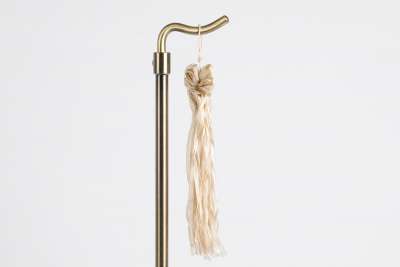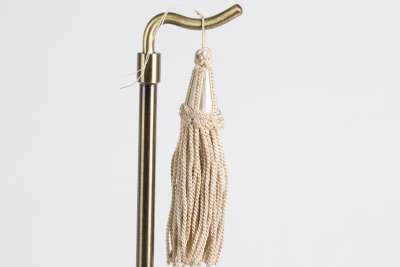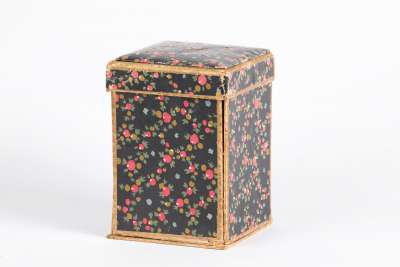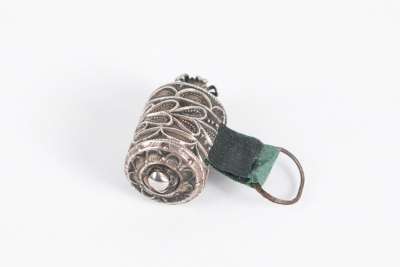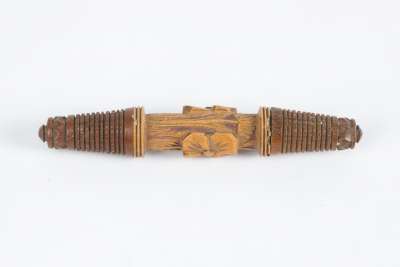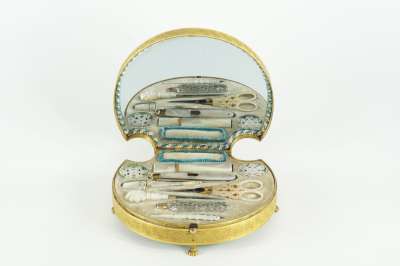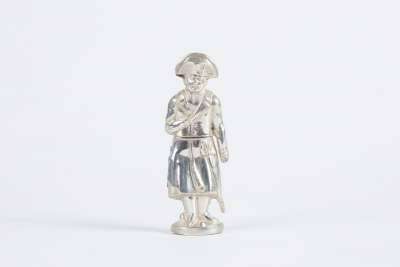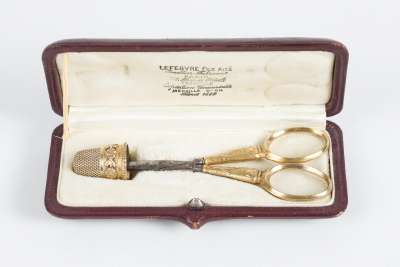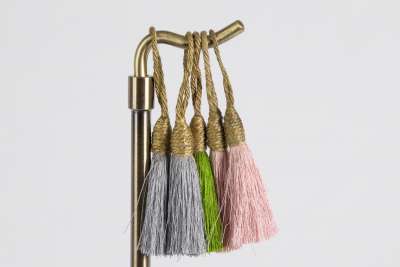A Dutch Snail Shell Pin Cushion, dating from circa 1850 to 1890, is a charming example of 19th-century craftsmanship. Originating from the Netherlands, this pin cushion cleverly utilises a natural snail shell as its base, providing a unique and organic aesthetic. The shell’s natural whorls are complemented by a vibrant, silk-covered cushion on top, designed to hold sewing pins. This piece exemplifies the ingenuity and resourcefulness of domestic tools from this period, where everyday objects were often transformed into functional household items.
Condition Report
The pin cushion is in good condition, with wear that is consistent with its age and use. The natural patina of the snail shell reflects its history, while the silk covering shows a minute area of wear. This minor imperfection does not detract from its function or charm, as visible in the provided images. The overall integrity of the piece remains intact, making it a delightful addition to any antique sewing collection or as a decorative piece in a vintage-themed interior.
Dimensions
Weight: 5gm, Length: 3.5cm, Width: 3.5cm, Height: 4cm.
A Delightful Sewing Companion
This antique pin cushion was originally intended as a practical sewing tool. During the 19th century, such items were essential to everyday domestic life, aiding seamstresses and homemakers in their sewing tasks. The pin cushion's compact size made it easy to handle and store, while its whimsical design added a touch of charm to the sewing area. Its clever use of natural materials also speaks to the era’s emphasis on utilising available resources creatively and sustainably.
An Expression of Naturalistic Design
The Dutch Nail Snail Shell Pin Cushion is a fine example of the naturalistic design style that was popular during the late 19th century. This style often incorporated elements from nature into household items, emphasising the aesthetic beauty of organic forms. The use of a snail shell in this pin cushion reflects this trend, celebrating the intricate and delicate patterns found in the natural world. Such designs were not only decorative but also served to connect everyday life with the natural environment.
The Craft of Shell Utilisation and Silk
The creation of this pin cushion involved the skilful integration of natural and man-made materials. The snail shell was likely selected for its aesthetic appeal and structural integrity, forming the robust base of the pin cushion. The silk cushion, delicately covering the top, provided a functional surface for securing pins. This combination of shell and silk highlights the resourcefulness and ingenuity of 19th-century craftsmen, who transformed simple materials into practical and beautiful household items.
Produced by Skilled Dutch Artisans
This pin cushion was crafted by Dutch artisans, known for their meticulous attention to detail and expertise in utilising natural materials. The Netherlands has a rich tradition of craftsmanship, with artisans often passing down their skills through generations. The precise integration of the snail shell and silk demonstrates a high level of skill and creativity, typical of Dutch craftsmanship from this period. Such items were often produced in small workshops, where artisans took pride in creating functional yet aesthetically pleasing objects.
Sought After by Collectors of Unique Sewing Antiques
Antiques like this Dutch Nail Snail Shell Pin Cushion are highly coveted by collectors for their unique design and historical significance. Collectors are often drawn to the ingenuity behind such items, appreciating the way they blend functionality with natural beauty. These pieces provide a glimpse into the domestic lives of the past, where creativity and resourcefulness were essential. Collecting such antiques allows enthusiasts to preserve and celebrate the rich history of domestic tools, offering a tangible connection to a bygone era.

